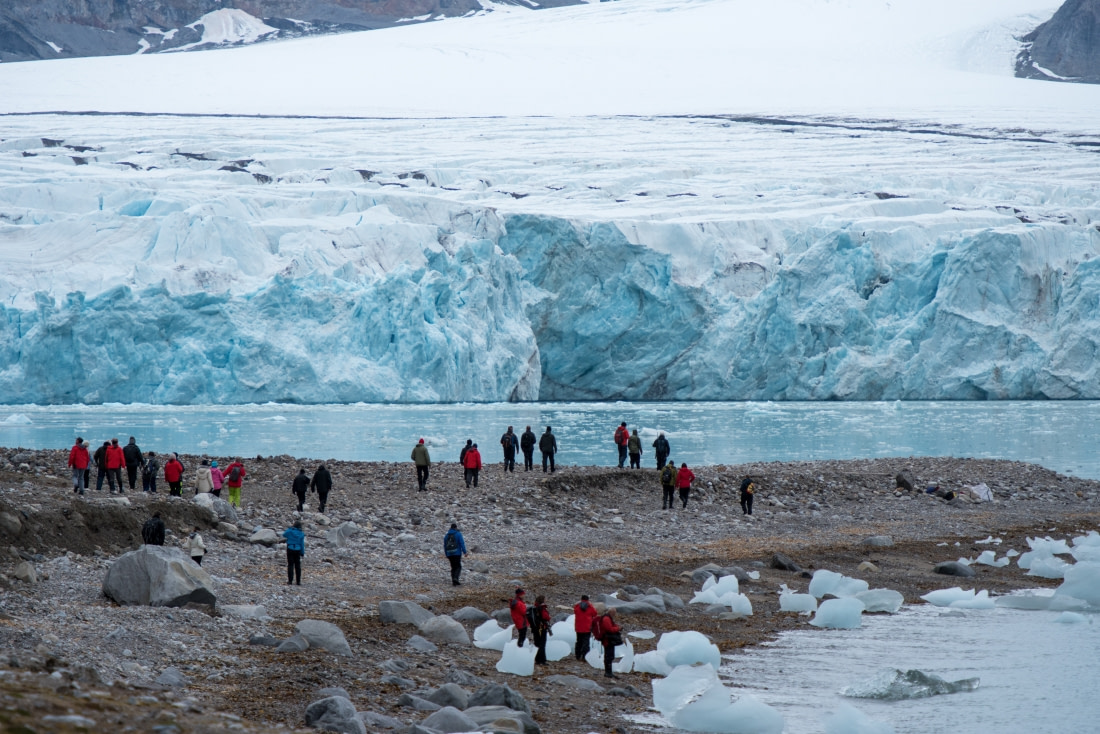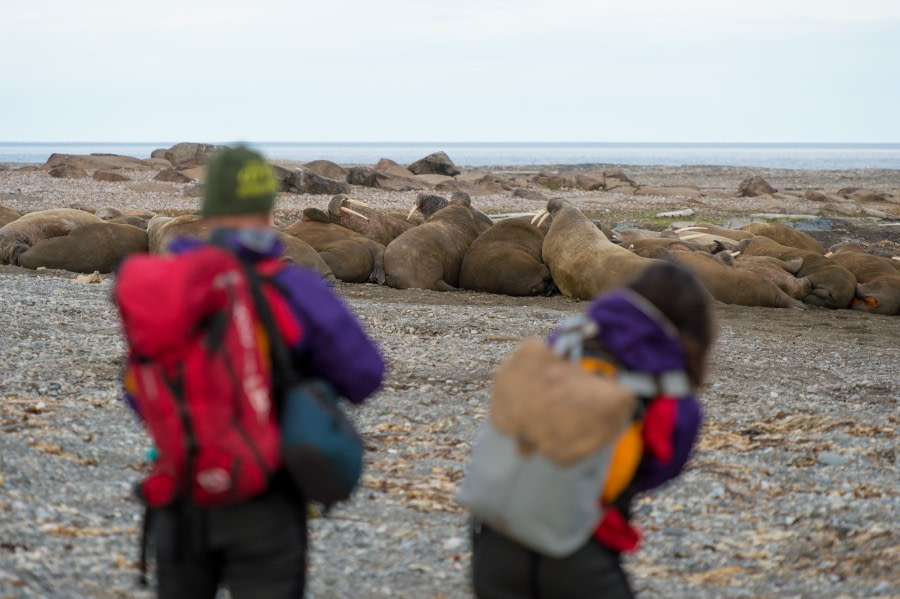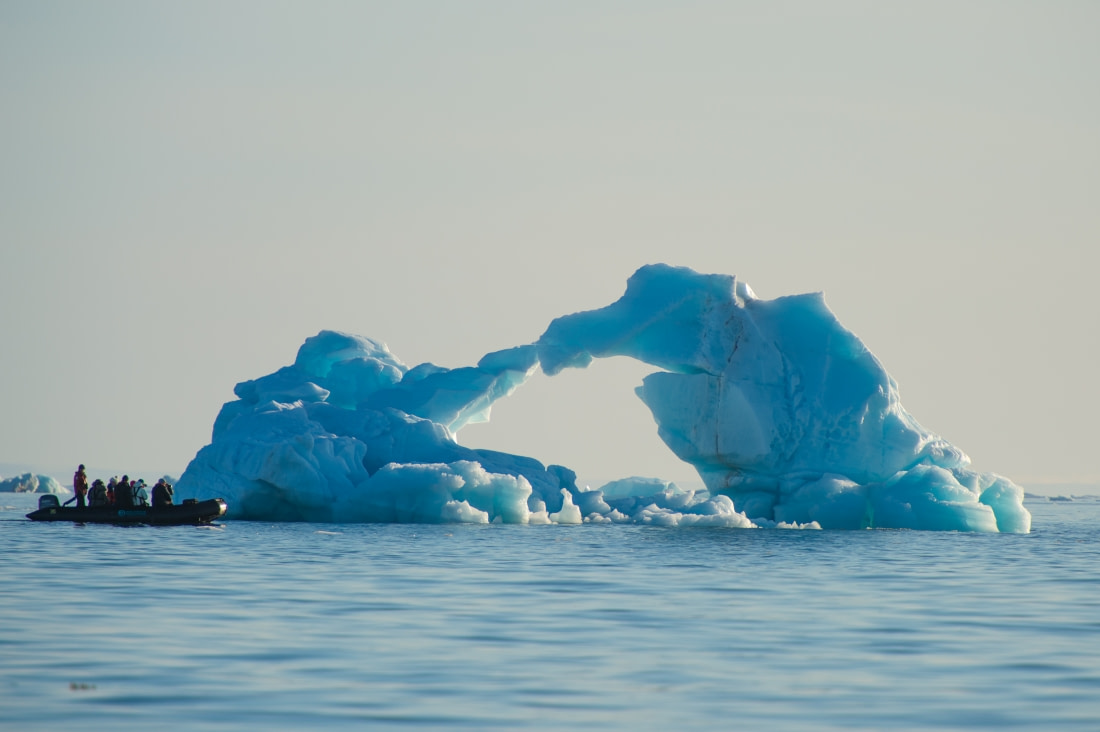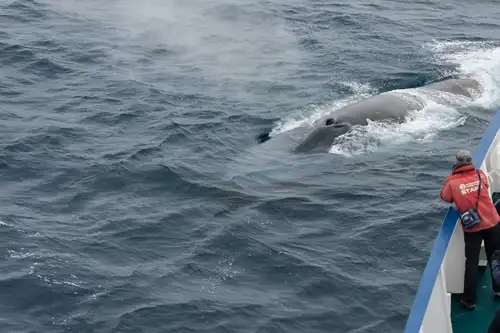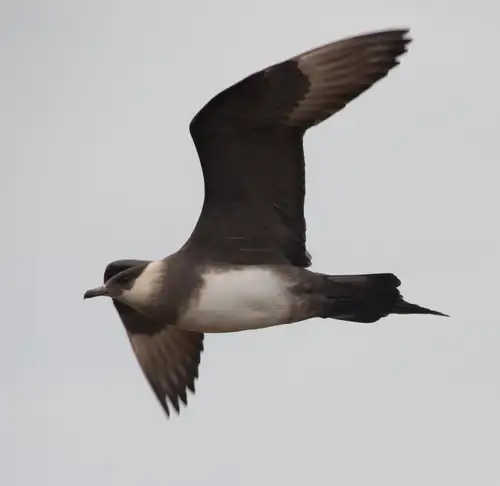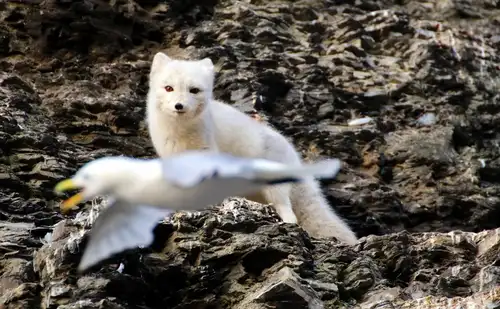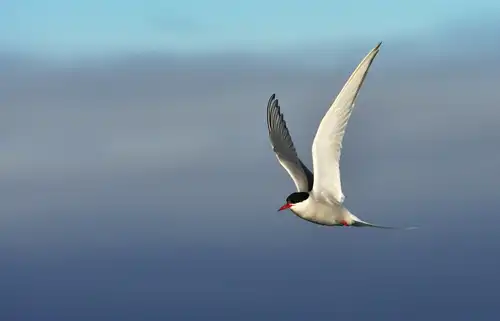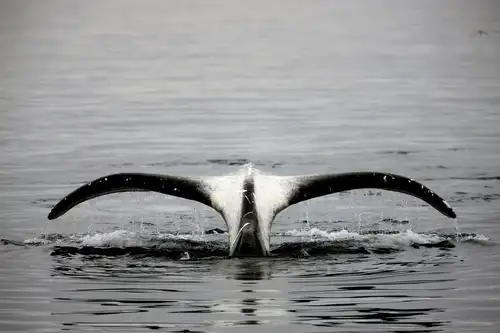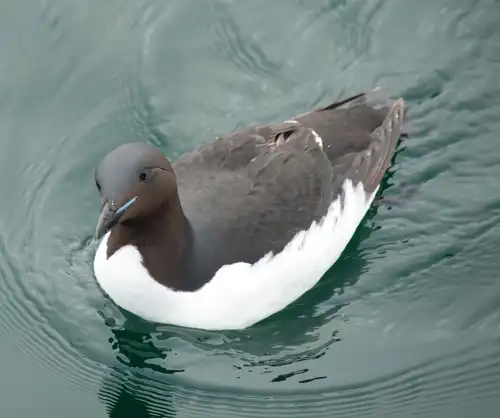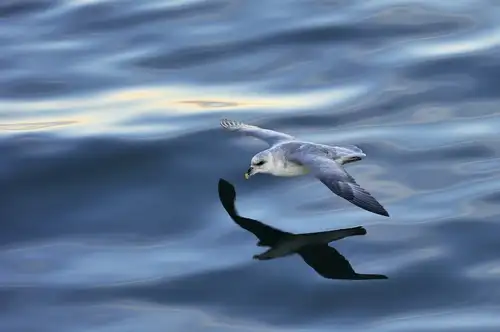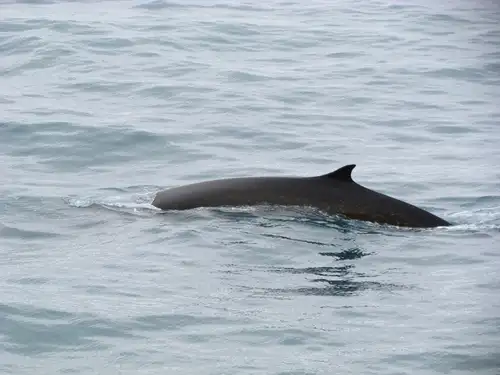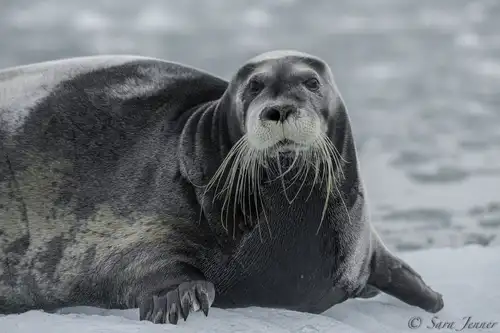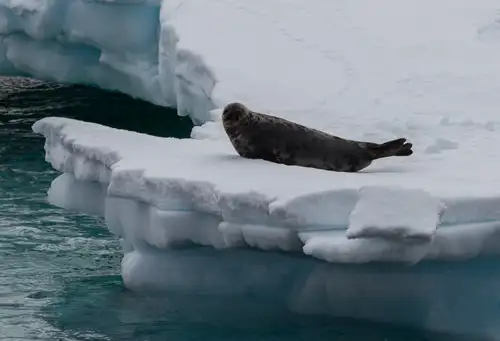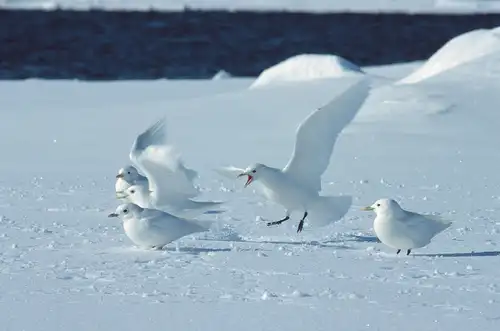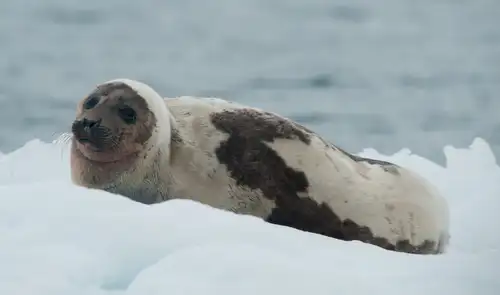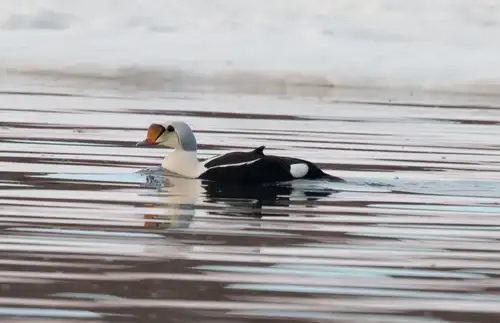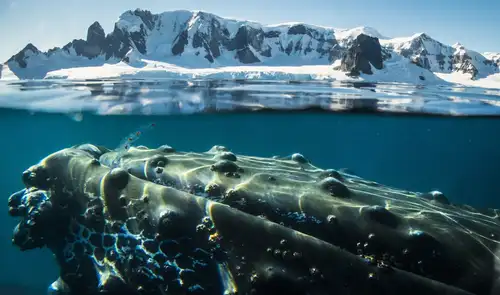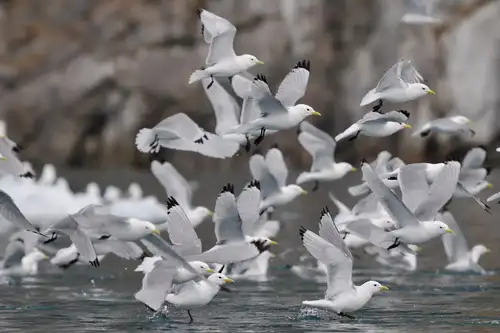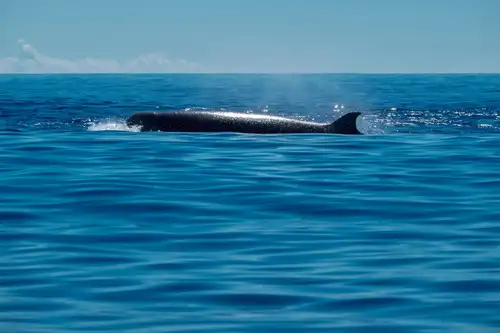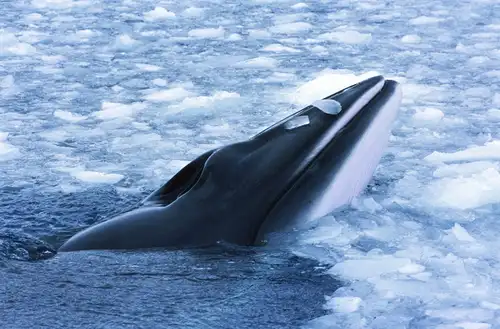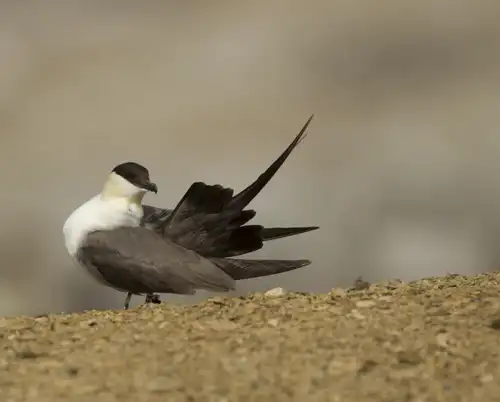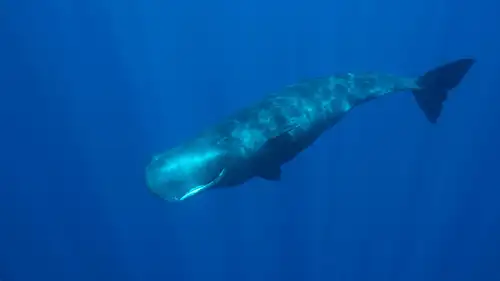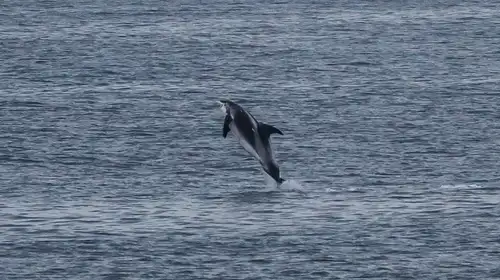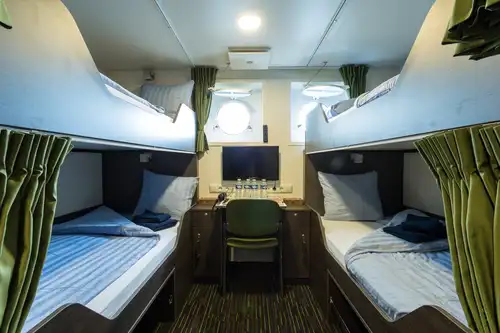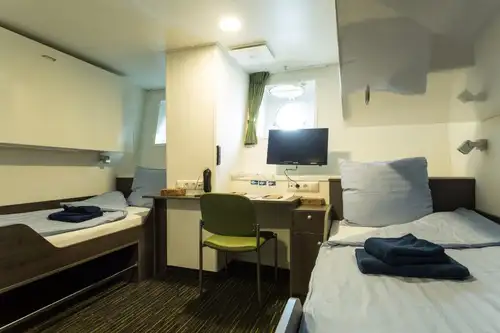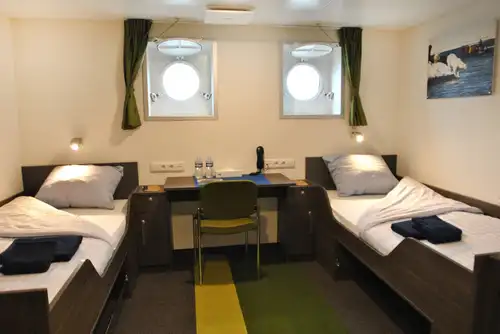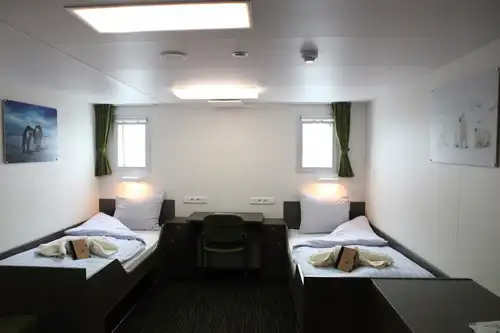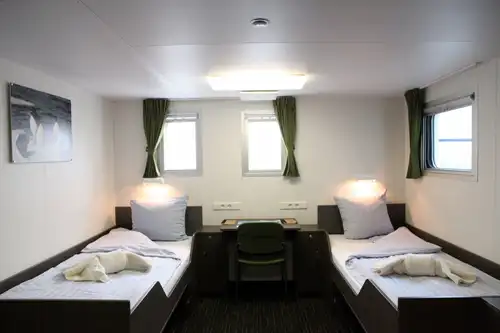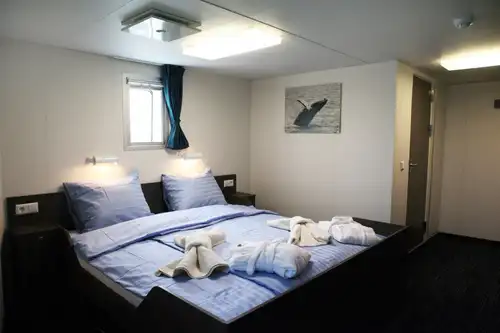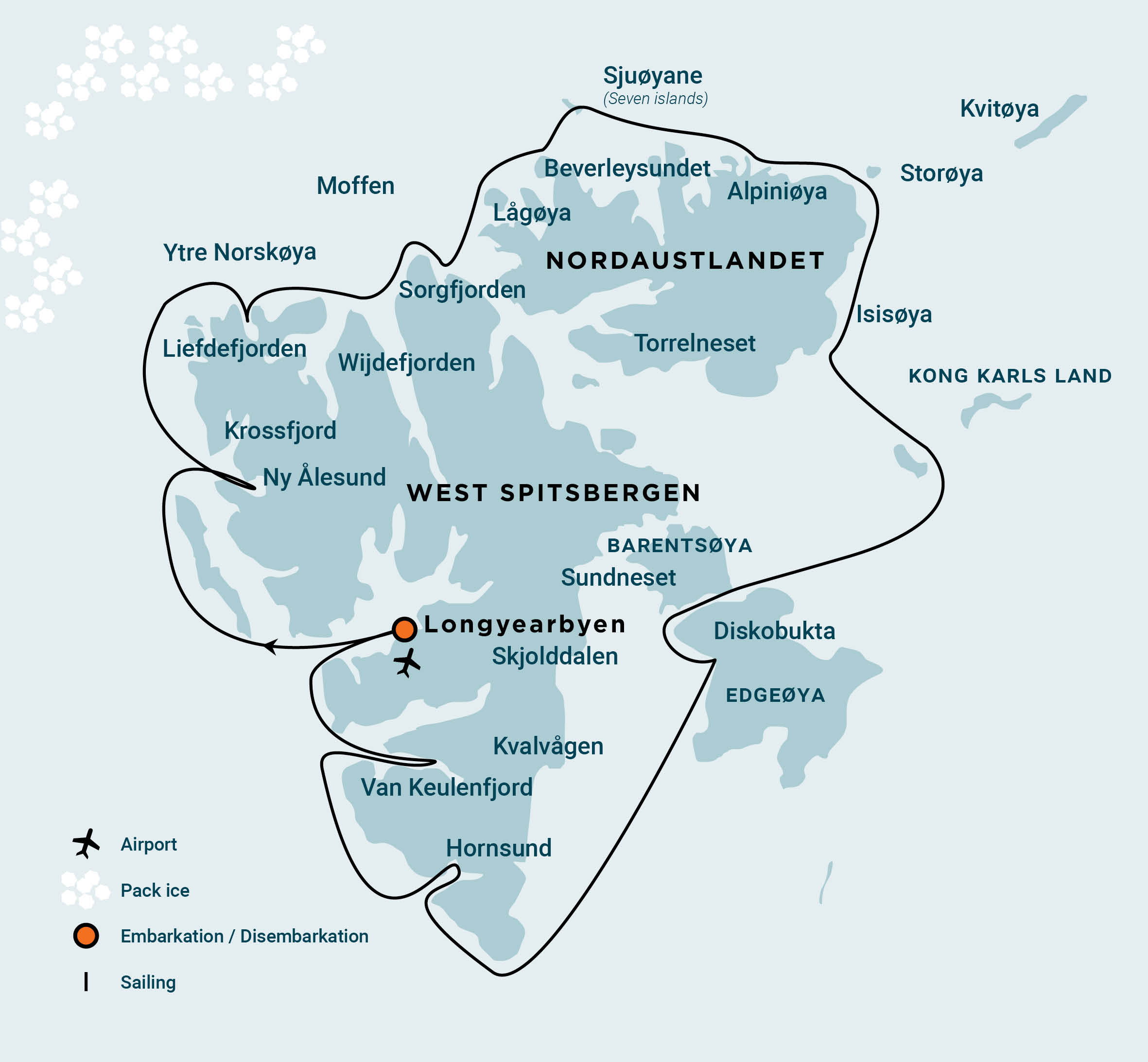
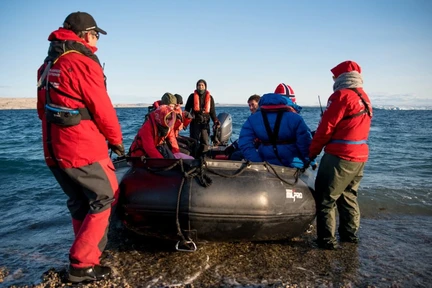
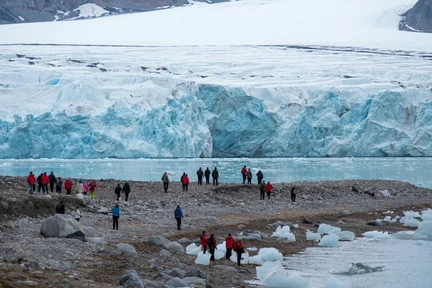
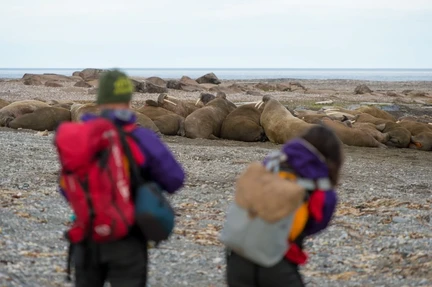


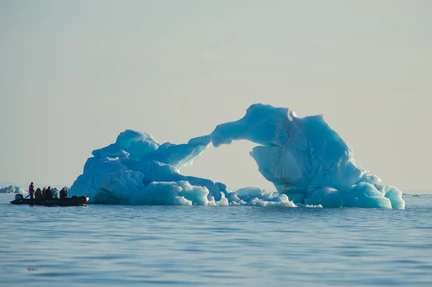










































 10 Days/9 Nights
10 Days/9 Nights




Arrive in Longyearbyen, the main town of Spitsbergen. Explore this former mining town with its church and museum. In the evening, the ship leaves Isfjorden, where you might see a minke whale.
Exploring West Spitsbergen
Krossfjorden and Ny Alesund
Travel north along the west coast to Krossfjorden, with views of glaciers. Visit Ny Alesund, the northernmost settlement, now a research center. Nearby, see geese and Arctic terns. Learn about Arctic exploration history.
Monaco Glacier
Weather permitting, sail into Liefdefjorden to see the Monaco Glacier. The area is a feeding spot for kittiwakes and a hunting ground for polar bears. If ice blocks the way, an alternate route along the west coast is possible.
Sorgfjord
Visit Sorgfjord, where sunken ships lie. Spot walruses and explore the area, home to ptarmigans. Heclahamna offers a semi-desert landscape for excursions.
Seven Islands
Reach the northernmost point at the Seven Islands, near the North Pole. Polar bears and walruses live here. Sail through pack ice, following the path of the 1928 Nobile Expedition rescue attempt.
Europe's Largest Ice Cap
Sail by Austfonna on Nordaustlandet, stopping at Isis Island. Pass Kapp Mohn, part of Europe's largest ice cap, known for its waterfalls. Sail near Kong Karls Land, a polar bear denning area.
Storfjorden
Sail through Heleysundet, seeing glaciers like Negribreen. Possible landings include Skjolddalen and Diskobukta, home to bird colonies and glacier fronts.
Pointed Mountains
Cruise Hornsund's fjords, with peaks like Hornsundtind. Spot seals, beluga whales, and polar bears. Land in Samarinvaagen and Birgerbukta for walks.
Bell Sund
Explore Bell Sund, warmer than other areas. Visit Ahlstrandhalvøya to see beluga skeletons, a reminder of past hunting. Spot belugas and explore tundra and bird breeding areas.
Return to Longyearbyen
Your adventure ends as you return to Longyearbyen, taking home unforgettable memories.








































































m/v Ortelius
The ice-strengthened Ortelius is fully equipped for polar exploration and can accommodate helicopter flights when necessary.

Specifications
| Passengers: | 108 passengers in 50 cabins |
| Staff & crew: | Crew 44 | Guides 8 | Doctor 1 |
| Length: | 90.95 meters |
| Breadth: | 17.20 meters |
| Draft: | 5.4 meters |
| Ice class: | UL1 (Equivalent to 1A) |
| Displacement: | 4090 tonnes |
| Propulsion: | 6 ZL 40/48 SULZER |
| Speed: | 10.5 knots average cruising speed |
Cabins Gallery


Ship Interior Gallery


Ship Exterior Gallery


Ortelius was originally the Marina Svetaeva. Built in Gdynia, Poland in 1989, it served as a special-purpose vessel for the Russian Academy of Science. Later it was re-flagged and renamed after the Dutch/Flemish cartographer Abraham Ortelius (1527 – 1598), who in 1570 published the first modern world atlas: Theatrum Orbis Terrarum or Theater of the World. At that time his atlas was the most expensive book ever printed. Ortelius is classed by Lloyd’s Register in London and flies the Dutch flag.
Perfect for Any Expedition
The vessel has the highest ice-class notation (UL1, equivalent to 1A) and is therefore suitable to navigate in solid one-year sea ice as well as loose multi-year pack ice. Ortelius can accommodate up to 108 passengers and has an abundance of open-deck spaces. It is manned by 24 highly experienced nautical crew members, 20 hotel staff, eight expedition specialists (one expedition leader, one assistant, and six lecturer-guides), and one doctor.
Ortelius: a Vessel with Comfort and Character
Please be aware that a small number of cabins may have a partially obstructed view due to the size of the windows and the design requirements of the ship. For example, some windows may be partly obstructed in the lower half by a gangway. The best view is always on the outer deck or the bridge. Though our voyages are primarily meant to offer our passengers an exploratory wildlife program with as much time ashore as possible, Ortelius offers all the comforts of a standard hotel ― along with a bar and lecture room. Flexibility assures maximum wildlife opportunities. As such, Ortelius carries 10 Zodiacs with 60hp Yamaha engines.
What to Wear
In keeping with the spirit of expedition, dress on board is informal. Bring casual and comfortable clothing for all activities, and keep in mind that much of the scenery can be appreciated from deck ― which can be slippery. Bring sturdy shoes with no-slip soles, and make sure your parka is never far away in case one of our crew shouts “Whales!” over the loudspeaker and you have to dash outside in a moment’s notice. Opt for layers, as it is comfortably warm aboard the ship though often cold on deck.
How to Pay
Refreshments and souvenirs will be charged to your cabin. The day before departure you can settle your bill with the hotel manager, paying by credit card (Visa or MasterCard) or cash (euro, or in some cases dollar). We cannot, however, accept checks. Though the prices and standard currency on board is in the euro, other currencies may be accepted at the discretion of the hotel manager, at prevailing rates.
Electric Current
The electrical supply aboard ship is 220v, 60Hz. Electrical outlets are standard European with two thick round pins, so some passengers may need a 220v/110v converter.
Gratuities
The customary gratuity to the ship’s service personnel is made as a blanket contribution at the end of the voyage and is divided among the crew. Tipping is a personal matter, and the amount you wish to give is at your sole discretion. As a generally accepted guideline, we suggest 8 ― 15 euros per passenger per day. It is better for the crew if you give cash.
Non-Smoking Policy
We have a non-smoking policy inside all our vessels, though you can smoke in certain designated areas. We ask that you please respect the wishes of non-smokers.
Your Physical Condition
You must be in good overall health and be able to walk several hours per day. The expedition is ship-based and physically not very demanding, but we spend as much time as possible on shore. You are, however, welcome to remain aboard the ship if you prefer. To join most excursions you must be able to get up and down the steep gangway ― from the ship to the water level ― to board the Zodiacs. Staff will assist you in and out of the boats, and boarding will become progressively easier with practice, but conditions on shore can be slippery and rocky. Remember, you will be traveling in remote areas without access to sophisticated medical facilities, so you must not join this expedition if you have a life-threatening condition or need daily medical treatment.
- Our passengers range from their 30s to their 80s, with the majority being between 45 and 65 years old. On our sailing vessels, passengers tend to be slightly younger. Our expeditions usually attract independent travelers from around the world who are characterized by a strong interest in exploring remote regions. The camaraderie and spirit of adventure that develops between our passengers is an important part of the expedition experience.
- Not during the summer, which is when the majority of our voyages take place. It depends on where you go in the Arctic, but temperatures can get up to 10°C (50°F) and don't tend to drop too far below 0°C (32°F). Antarctica is slightly colder, but still warm in the austral summers, reaching up to 2°C (36°F) depending on your location, and tending not to get too much lower than that during the warm months. You're only likely to experience colder weather during our fall and winter Arctic trips, where temps can range between -34°C to 0°C (-29°F to 32°F). But you'll have the northern lights to keep you warm.
- No, you are not able to change currency on board.
- The currency used on all vessels is the Euro, but you can also pay with USD.
- The weather in Spitsbergen differs per area and location. Although snow can occur throughout the year in Svalbard, the North Atlantic Current helps provide Svalbard with warmer temperatures than many other areas within similar latitudes. However, strong winter breezes, low pressure and the combination of wet sea air and cold polar air can lead to rapidly changing weather conditions, especially during the winter months. During the winter season, the temperature in Spitsbergen can can drop to -16 to -12 degrees Celsius (3 to 10 degrees Fahrenheit). Adding in the wind chill factor means the weather can feel much colder. July is the warmest month of the year with an average temperature between 3 and 8 degrees Celsius (37 to 46 degrees Fahrenheit). We therefore recommend that you bring a variety of warm clothes for your Spitsbergen cruise.
- As polar bears can travel great distances in a day, it is impossible to say where and when we will spot them. Sea ice is the best place to look, so we tend to focus our efforts there. Though you will have a good chance of seeing polar bears in Svalbard, nature makes the decisions. Sightings cannot be guaranteed.
- The number of passengers is limited to approximately 116 on the Ortelius. Furthermore the vessel is manned by 20 highly experienced international nautical crew, 19 international hotel crew, including stewardesses, 7 expedition staff in Antarctica (1 expedition leader and 6 guides/lecturers) and 1 doctor.
- The Ortelius was built in Poland in 1989 for the Russian Academy of Science.
You May Also Like



Alpine Peaks of Spitsbergen, Ski & Sail
 8 Days / 7 Nights
8 Days / 7 Nights
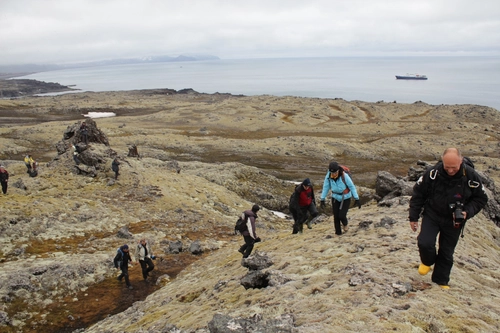
Arctic Ocean - Fair Isle, Jan Mayen, Ice Edge, Spitsbergen, Birding
 10 Days / 9 Nights
10 Days / 9 Nights
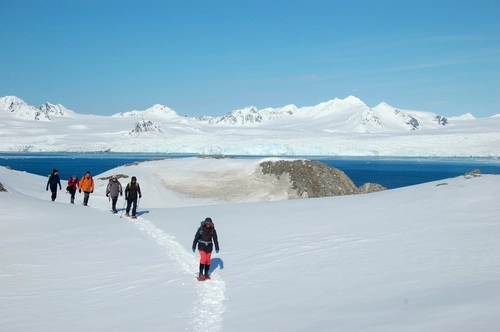
North Spitsbergen - Arctic Spring , Hike & Sail
 8 Days / 7 Nights
8 Days / 7 Nights
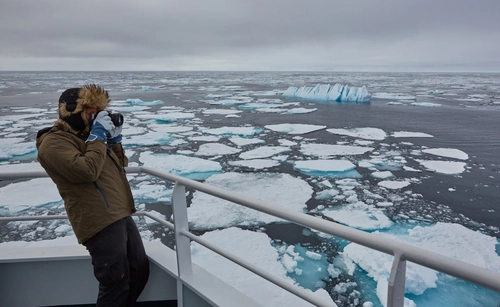
North Spitsbergen Explorer - Into the pack ice - Polar Bear Special
 8 Days / 7 Nights
8 Days / 7 Nights

Arctic Ocean - Jan Mayen, Ice edge, Spitsbergen, Birding
 9 Days / 8 Nights
9 Days / 8 Nights
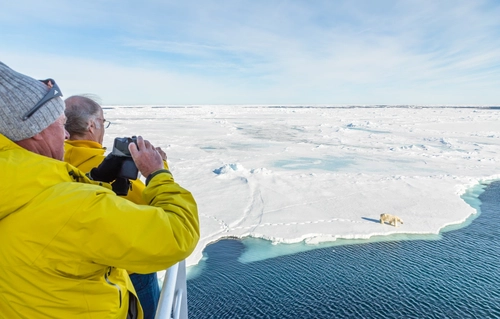
Arctic Ocean - Fair Isle, Jan Mayen, Ice edge, Spitsbergen, Birding - Summer Solstice
 10 Days / 9 Nights
10 Days / 9 Nights
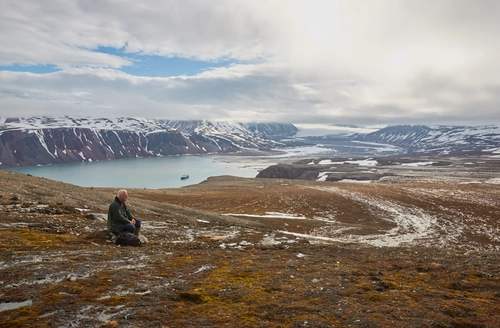
North Spitsbergen Explorer - Versatile landscapes, sea ice & wildlife
 8 Days / 7 Nights
8 Days / 7 Nights
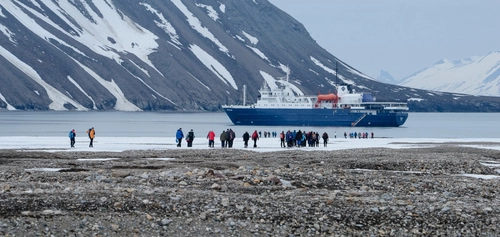
North Spitsbergen Basecamp – Summer Solstice - Free Kayaking, Hiking, Photo Workshop, Diving (supplemented)
 8 Days / 7 Nights
8 Days / 7 Nights
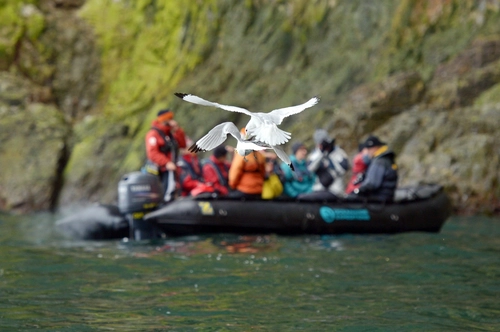
North Spitsbergen Explorer - Versatile landscapes, sea ice & wildlife - Summer Solstice
 8 Days / 7 Nights
8 Days / 7 Nights

North Spitsbergen - Arctic Summer
 11 Days / 10 Nights
11 Days / 10 Nights

East Spitsbergen - Home of the Polar Bear, Including Long Hikes & Cleaning the Shores
 8 Days / 7 Nights
8 Days / 7 Nights
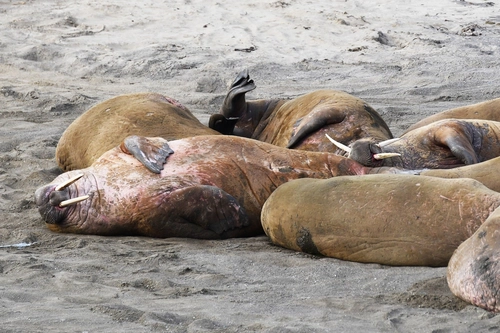
Around Spitsbergen, In the realm of Polar Bear & Ice
 10 Days / 9 Nights
10 Days / 9 Nights

North Spitsbergen Explorer – Into the Pack Ice – Polar Bear & Whale Special
 10 Days / 9 Nights
10 Days / 9 Nights
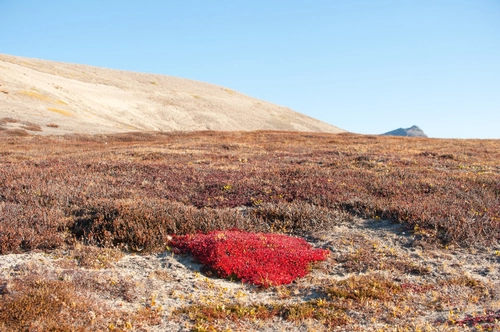
Northeast Greenland Solar Eclipse Explorer Voyage
 14 Days / 13 Nights
14 Days / 13 Nights
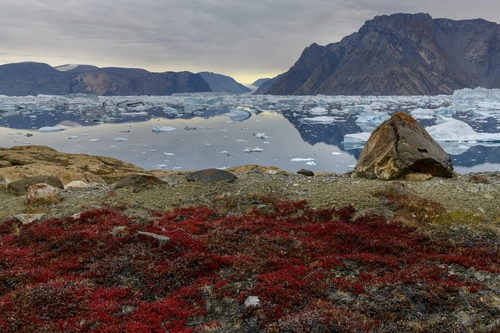
Spitsbergen - Northeast Greenland, Fly & Sail
 20 Days / 19 Nights
20 Days / 19 Nights

Around Spitsbergen incl. Nordaustlandet
 10 Days / 9 Nights
10 Days / 9 Nights

Alpine Peaks of Spitsbergen - Ski & Sail
 8 Days / 7 Nights
8 Days / 7 Nights

Arctic Ocean - Fair Isle, Jan Mayen, Ice Edge, Spitsbergen, Birding Special
 10 Days / 9 Nights
10 Days / 9 Nights

North Spitsbergen Explorer - Versatile Landscapes, Sea Ice & Wildlife
 8 Days / 7 Nights
8 Days / 7 Nights

North Spitsbergen Explorer - Into the Pack Ice - Polar Bear Special
 8 Days / 7 Nights
8 Days / 7 Nights

North Spitsbergen, Arctic Summer - Summer Solstice
 11 Days / 10 Nights
11 Days / 10 Nights

North Spitsbergen Explorer - Versatile Landscapes, Sea Ice & Wildlife - Summer Solstice
 8 Days / 7 Nights
8 Days / 7 Nights

North Spitsbergen Explorer - Into the Pack Ice - Polar Bear Special - Summer Solstice
 8 Days / 7 Nights
8 Days / 7 Nights

Arctic Ocean - Spitsbergen: Jan Mayen, Ice Edge & Birding - Summer Solstice
 9 Days / 8 Nights
9 Days / 8 Nights

North Spitsbergen Basecamp - Free kayaking, Hiking, Photo Workshop
 8 Days / 7 Nights
8 Days / 7 Nights

North Spitsbergen, Arctic Summer
 11 Days / 10 Nights
11 Days / 10 Nights

Around Spitsbergen, in the Icy Realm of the Polar Bear
 10 Days / 9 Nights
10 Days / 9 Nights

A Taste of North Spitsbergen - Compact Arctic Adventure
 6 Days / 5 Nights
6 Days / 5 Nights

South Spitsbergen Explorer - Bear Island - Diving (supplemented)
 10 Days / 9 Nights
10 Days / 9 Nights

Around Spitsbergen - Arctic Summer
 15 Days / 14 Nights
15 Days / 14 Nights

Around Spitsbergen and Nordaustlandet, In the Icy Realm of the Polar Bear
 10 Days / 9 Nights
10 Days / 9 Nights

Spitsbergen, Northeast Greenland & Scoresby Sund, Including Long Hikes
 14 Days / 13 Nights
14 Days / 13 Nights

South Spitsbergen, Bear Island & Mainland Norway - Aurora Borealis
 6 Days / 5 Nights
6 Days / 5 Nights

8 Scientific Wonders of the Arctic
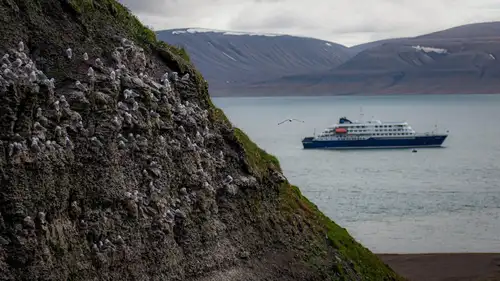
Circumnavigating Spitsbergen

Svalbard a Disneyland for geologists
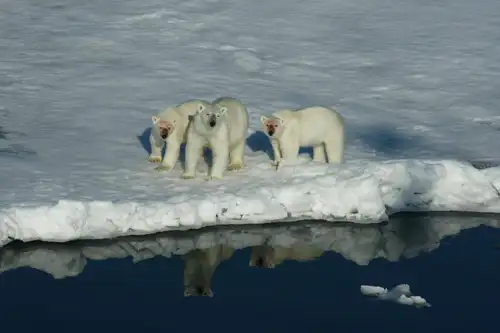
Polar Bear Primer: Eight Facts About the Arctic Wanderer
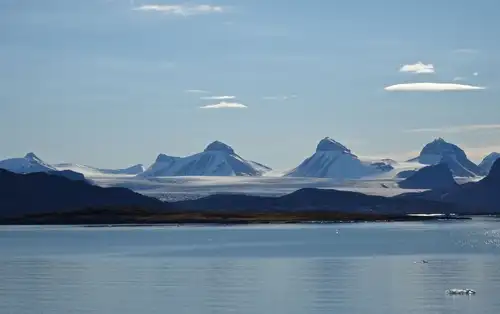
The Arctic Borderland of Kongsfjorden, Svalbard

Narwhals: the Aquatic Unicorns of the Arctic
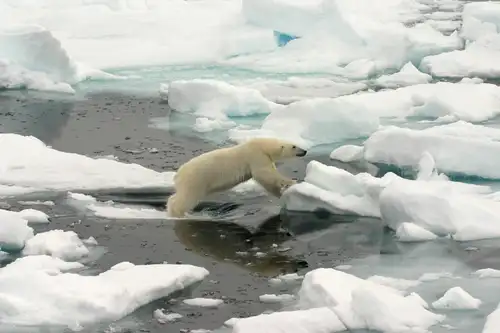
Spitsbergen: a true polar bear trip
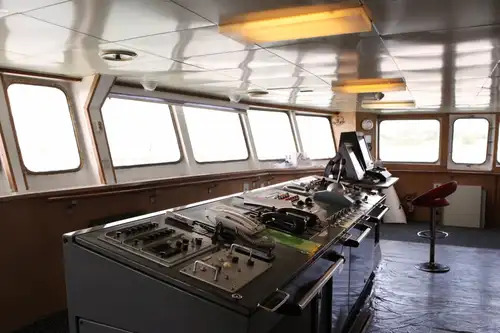
Navigating by touch through the sea ice

Arctic Icon: 10 Facts about the Polar Bear
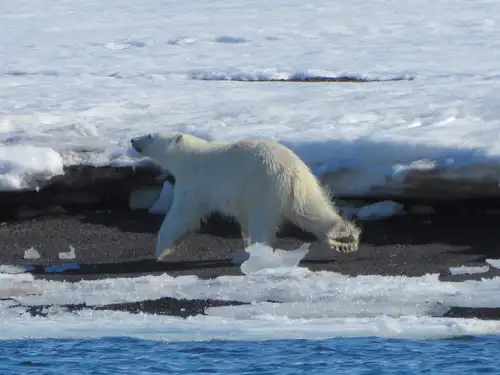
Polar bear feast

Amphibian, reptiles and herbivore mammals in the Arctic
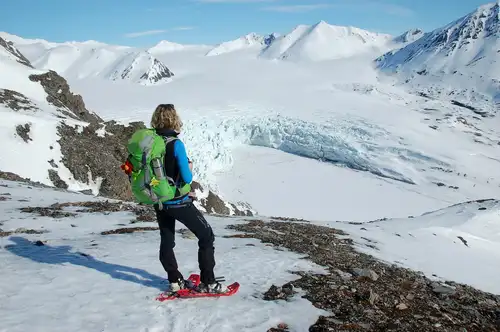
Arctic on Foot: Hiking and Snowshoeing the Far North
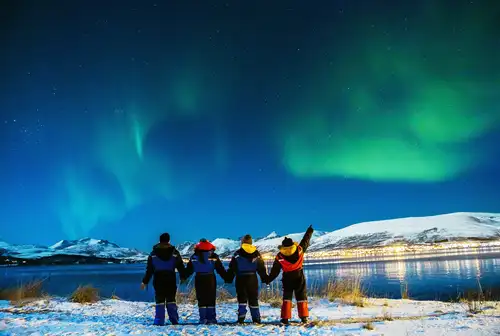
10 Tips for Photographing the Northern Lights

The polar bear: king of the Arctic food chain
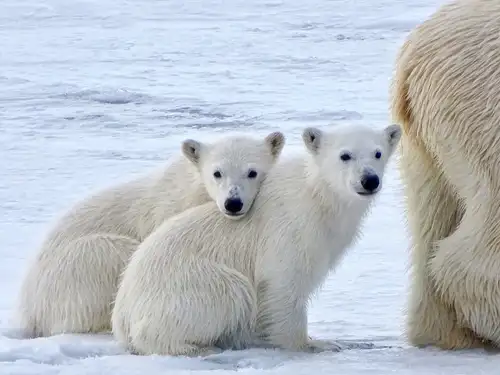
Where the Polar Bears Roam
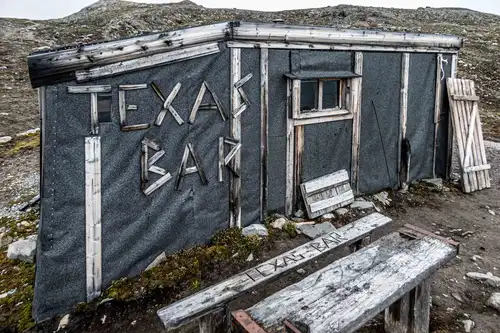
Svalbard’s Texas Bar

“The polar bear will still be there”

Around Spitsbergen vs. North Spitsbergen
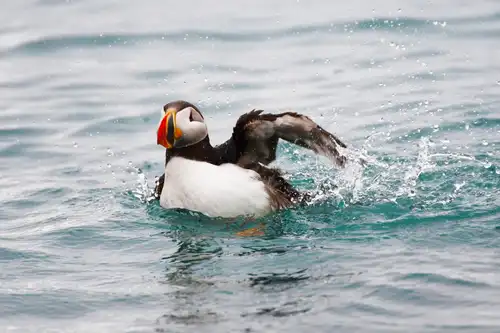
Puffins: Clown Birds of the Atlantic






